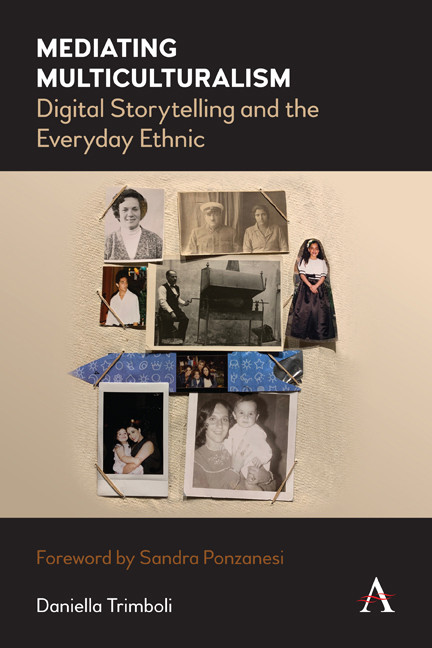Chapter Two - Digital Storytelling and Diversity Work
Published online by Cambridge University Press: 21 August 2020
Summary
Story has many jobs, as a learning modality through memory, as a way to address our connection to the changing world around us, as a form of reflection against the flood of ubiquitous access to infinite information, as the vehicle to encourage our social agency, and finally, as a process by which we best make sense of our lives and our identity […] Story is essentially an exercise in controlled ambiguity. And given the co-construction of meaning between us as storytellers, and those who are willing to listen to our words, this is story’s greatest gift […] We can feel whole about impermanence. We can bear to be ourselves.
– Lambert (2013, p. 14, italics added), creator of the digital storytelling modelDigital storytelling has become the new ten pin bowling [of community arts]!
– Horsley (2014)Digital storytelling is commonly understood as a narrative-based medium that blends still photography, home video, sound and voice narration into a hyper-short ‘film’, edited to emotively tell an individual, first-person story. While the term is widening over time and some scholars, such as Carolyn Handler Miller (2004), use digital storytelling to include such things as mobile technologies, gaming and device apps, I am particularly interested here in forms of digital storytelling with a more direct relationship to the genre emerging from the Californian-based StoryCenter (formerly Center for Digital Storytelling or the CDS). Other forms of new media storytelling can be found in various locations, but the StoryCenter is responsible for defining digital storytelling as a specific genre that has proliferated globally.
While the StoryCenter began working on a model for digital storytelling in the 1990s, it was not until after the turn of the century that it began to take off as a screen genre. It then spread quickly to Australia and the United Kingdom and has since been adopted in other parts of the world, including Western Europe and South Africa. A genre can be understood as a set of texts that share characteristics in content and form. The content and production processes of the StoryCenter digital storytelling model, as well as the high level of users who have adopted it, allow the model to be understood as a genre of new media (Kaaire 2012).
- Type
- Chapter
- Information
- Mediating MulticulturalismDigital Storytelling and the Everyday Ethnic, pp. 35 - 54Publisher: Anthem PressPrint publication year: 2020



